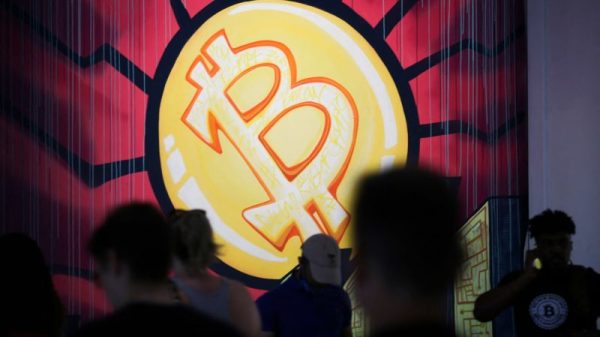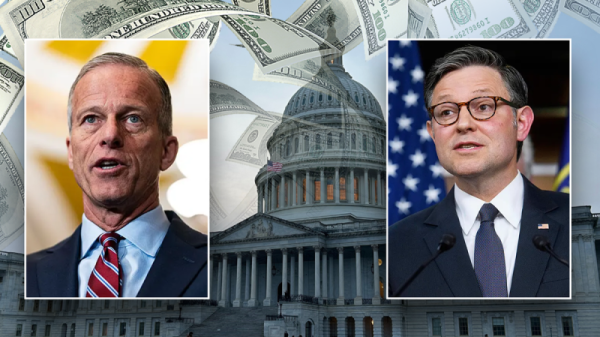It’s most likely that sinking poll numbers, more than anything else, prompted the Biden Administration’s latest deflective policy initiative. A “Strike Force on Unfair and Illegal Pricing,” to be jointly run by the US Department of Justice (DOJ) and Federal Trade Commission was announced in early March, charged with pursuing “unfair and illegal” pricing. Disinflation has slowed notably throughout the first two months of 2024 and with an election coming, a pivot was essential. Characterizing stubbornly high prices as “gouging” not only angers financially beleaguered Americans, but deters inquiries regarding the effectiveness of the much-touted, and now seldom-mentioned, 2022 spending bill opportunistically titled the “Inflation Reduction Act.”
It cannot be stressed enough that prices have continued to rise since the Inflation Reduction Act was passed in August of 2022. The White House website itself refers to that legislation as the “most significant action Congress has taken on clean energy and climate change in the nation’s history.”
US CPI Urban Consumers Index (blue), US CPI Urban Consumers Ex Food & Energy Index (red), passage of the Inflation Reduction Act (green)
A look at the last 12 months of Consumer Price Index trends, broken into flexible and sticky prices, makes clear the primary source of the recent gumming-up of price deceleration. As a refresher, sticky prices are those which adjust slowly in response to changes in supply and demand — often due to contractual agreements, menu costs, regulatory requirements, and other sources of rigidity.
Atlanta Fed Flexible CPI (12 month, black) vs. Sticky CPI (12 month, blue)
Any enforcement action by this new investigatory body will necessarily be arbitrary, as all characterizations of pricing as excessive or predatory (or reasonable, for that matter) are subjective. Historically, official attempts to define gouging have pursued different approaches, but primarily refer to prices rising to a degree that generates politically actionable complaints. At times a “price increase threshold” has been cited, defining some dollar amount or percentage increase as excessive. Elsewhere, the designation of goods and services as “essential” has been used to justify interfering in the function of markets. Emergency circumstances have also been invoked — ironically, precisely when unfettered prices are at their most critical — to justify invalidating the decentralized workings of the price system.
Prices are vastly more, both in their derivation and economic function, than the simple exchange ratio they are sometimes dismissed as. They facilitate economic calculation and the rational allocation of goods absent command control. Some sixty-one years ago, Oskar Morgenstern gave an example of exactly how complex prices may be beneath the surface. Quoting from a contract for iron ore summarized as “$4.60 per ton,” the price is:
not merely $4.60 a ton but $4.60 per gross long ton of 2,240 pounds of Mesaba Bessemer ore containing exactly 51.5 percent iron and 0.045 percent phosphorus, with specified premiums for ore with a higher iron content or a lower phosphorus content and with specified discounts for ore with a lower iron content or a higher phosphorus content; samples to be drawn and analyzed on a dry basis by a specified chemist at Cleveland, the cost being divided evenly between seller and buyer; 48,000 tons to be delivered at the rate of approximately 8,000 tons per month during April-September, inclusive, on board freight cars of the New York Central Railroad at Cleveland, Ohio; the purchaser to pay all charges involved in moving ore from the rail of the lake steamer to the freight car and other port charges such as unloading, dockage, storage, reloading, switching and handling; ore to be weighed on railroad scale weights at Cleveland; payment to be made in legal tender or bank checks of the buyer to the Cleveland agent of the mining company on the 15th of the month for all ore received during the previous month.
In the case of this single price, anything from the iron content of the resource, to the location of the assaying chemist, to the time and method of delivery, to the basis of payment could change the balance of inputs, necessitating a change of price. If more than one of those many factors change simultaneously, the price may change notably. And this is the price of a single good in a vast market constantly upended and resettled in a furious clash of rigid scarcity and unbound demand. The notion that a bureaucrat can decide, simply by looking at numbers or a change in numbers, that a change in price is excessive or reasonable is rooted in the same esotericism by which a bartender, suddenly elected to public office, instantaneously becomes an expert on economics, political science, law, international relations, civil-military affairs, and so on.
The so-called Strike Force — not a task force, but a strike force, indeed — is likely to act as a bludgeon for government attacks on private interests, and in particular, those viewed as adversaries to the administration. Here are three forecasts pertaining to the nascent numerology junta.
First, its announcements regarding enforcement actions will be timed to coincide with CPI or PCE releases (perhaps employment releases as well, given the recent trend): particularly, while perhaps not exclusively, when those releases are less-than-rosy. Second, that those companies taken to task for ”gouging” will fall within at least one of three major categories:
A. Firms or industries whose cost structures are dominated by sticky prices;
B. Firms or industries regarded as hostile to prevailing political philosophies;
C. Select political targets
In Category A, one would expect to see accusations and punitive measures directed at housing/shelter, healthcare, and utilities firms, among others. Category B targets are likely to include the energy sector (oil, natural gas, and what remains of the coal industry), legacy automakers, large retailers and food chains with a history of resisting collective-bargaining efforts, and certain banks and financial institutions. The Category C may include interests headed or owned by well-known or outspoken billionaires, media firms opposed to the ideologies of the Biden Administration, large companies with ownership based in Israel, Russia, or other nations at odds with current foreign policy objectives, entities or organizations donating or providing support to the other side of the aisle, and vocal opponents of the ESG and DEI wave.
The third and final prediction is that two prominent major sources of sticky prices, union wage contracts and government-imposed costs, will be ignored or overlooked in whatever form of scrutiny is brought to bear on private companies.
In one sense, the introduction of the Strike Force on Unfair and Illegal Pricing represents a retreading of the Nixon Administration’s ruinous Economic Stabilization Program, yet an escalation in its replacement of price controls and wage freezes with an administrative cudgel to harass and assail US citizens: owners, managers, and ultimately shareholders of for-profit firms. It shifts blame from monetary central planners to the most productive members of American society. By employing subterfuge, arrogance, and cowardice all at once, it is perhaps the quintessential political maneuver — a brand of awfulness for which there is no price, but nevertheless, tremendous cost.




































